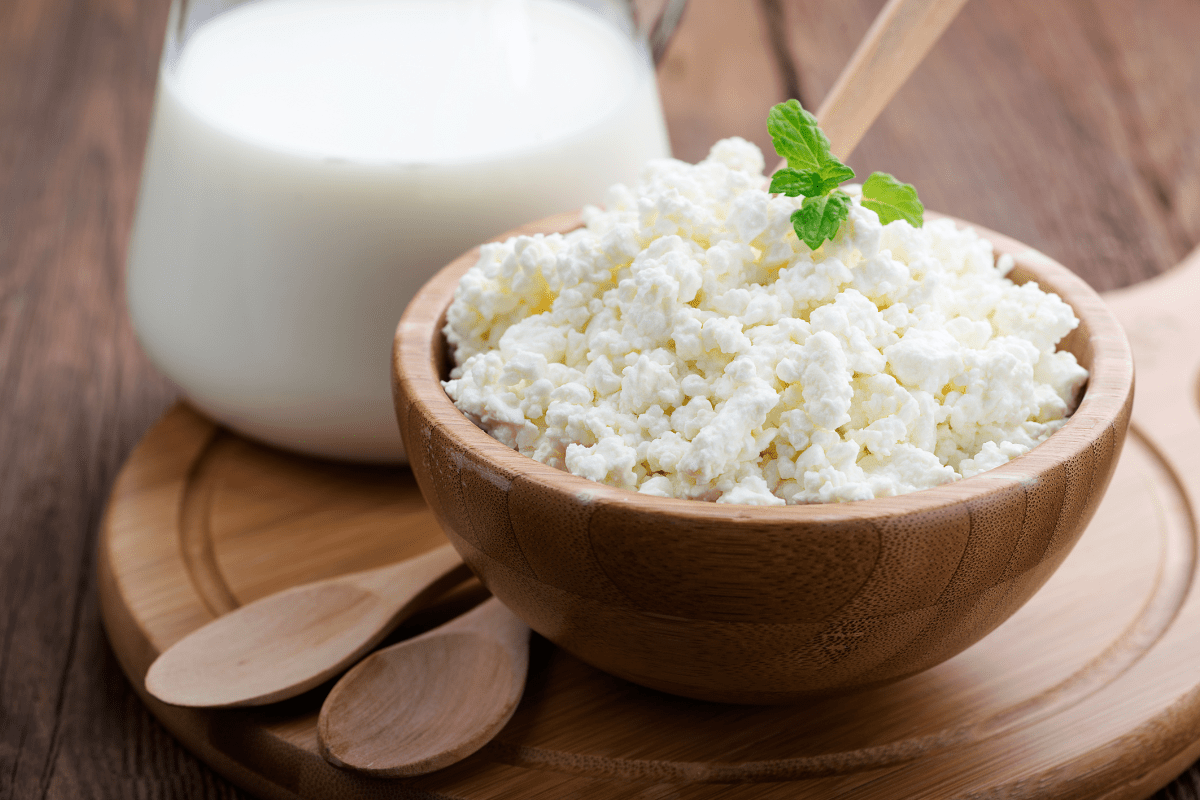When you take a trip to your local grocery store and explore the dairy aisle now, there are so many different types of yogurt available. Everything from regular yogurt to Greek yogurt, Australian yogurt, French yogurt, Skyr/Icelandic yogurt, lactose-free yogurt, drinkable yogurt, kefir, and more!
What are the differences?
What is Regular Yogurt?
Regular yogurt, also known as conventional yogurt, is a dairy product made by fermenting milk with live bacterial cultures. Regular yogurt is not strained after fermentation, which gives it a lighter, more liquid consistency.
What is Greek Yogurt?
Greek yogurt is probably best known for its tangy flavor and smooth, velvety texture that sets it apart from the taste and texture of regular yogurt.
The difference of taste and texture is a result of the unique straining process. It is strained to remove most of the whey, which results in a thicker and creamier texture.
This straining process also removes some of the lactose content, meaning that Greek yogurt is higher in protein than regular yogurt, making it an ideal substitute for a variety of recipes.

Key Differences Between Greek Yogurt and Regular Yogurt
When it comes to choosing yogurt, the debate between Greek yogurt and regular yogurt often comes up. Both types have their unique qualities, but understanding their differences can help you make a more informed choice based on your dietary needs and preferences.
Here’s a detailed comparison of Greek yogurt vs normal yogurt to guide you.
-
Straining Process
- Greek Yogurt: Greek yogurt is strained multiple times to remove a significant amount of its whey, the liquid remaining after milk has been curdled and strained. This process results in a thicker, creamier texture and a more concentrated flavor.
- Regular Yogurt: Regular yogurt is typically strained only once or not at all. As a result, it retains more whey and has a lighter, more liquid consistency compared to Greek yogurt.
- Greek Yogurt: Greek yogurt is strained multiple times to remove a significant amount of its whey, the liquid remaining after milk has been curdled and strained. This process results in a thicker, creamier texture and a more concentrated flavor.
-
Texture
- Greek Yogurt: Greek yogurt tends to have a thicker, creamier texture compared to regular yogurt. The texture of Greek yogurt is notably thicker and creamier due to the extra straining. Its flavor can be tangier and more robust compared to regular yogurt, which can be a matter of personal preference.
- Regular Yogurt: With a more fluid consistency, regular yogurt has a lighter texture. Its flavor is usually milder and less tangy than Greek yogurt, making it a good option for those who prefer a softer taste.
- Greek Yogurt: Greek yogurt tends to have a thicker, creamier texture compared to regular yogurt. The texture of Greek yogurt is notably thicker and creamier due to the extra straining. Its flavor can be tangier and more robust compared to regular yogurt, which can be a matter of personal preference.
-
Taste
- Greek Yogurt: Often has a tangier taste compared to regular yogurt.
- Regular Yogurt: Milder and less tangy, with a more balanced sweetness and tartness. The flavor is more subtle, which might appeal to those who prefer a less intense taste.
- Greek Yogurt: Often has a tangier taste compared to regular yogurt.
-
Nutritional Content
- Greek Yogurt: Due to the straining process, Greek yogurt has a higher protein content per serving than regular yogurt. This makes it a popular choice for those looking to increase their protein intake. It also tends to have lower sugar content, as some of the lactose (milk sugar) is removed with the whey. However it can have slightly higher fat content, depending on which variety and brand you choose.
- Regular Yogurt: Regular yogurt generally has less protein and more sugar because it retains more of the natural milk sugars. It’s often lower in fat unless you specifically choose a full-fat version.
- Greek Yogurt: Due to the straining process, Greek yogurt has a higher protein content per serving than regular yogurt. This makes it a popular choice for those looking to increase their protein intake. It also tends to have lower sugar content, as some of the lactose (milk sugar) is removed with the whey. However it can have slightly higher fat content, depending on which variety and brand you choose.
-
Usage in Recipes
- Greek Yogurt: Because of its thickness, Greek yogurt works well as a substitute for a variety of ingredients in recipes, like sour cream or mayonnaise. It can be used as a base for smoothies, dressings, and dips, and more. Providing a creamy texture with different nutritional benefits.
- Regular Yogurt: The lighter texture of regular yogurt makes it a versatile ingredient for baking and cooking. It blends well into recipes where a less dense consistency is desire such as in sauces, marinades, and as a topping for dishes.
- Greek Yogurt: Because of its thickness, Greek yogurt works well as a substitute for a variety of ingredients in recipes, like sour cream or mayonnaise. It can be used as a base for smoothies, dressings, and dips, and more. Providing a creamy texture with different nutritional benefits.
Nutritional Benefits of Greek Yogurt
Each serving* of Greek yogurt has approximately the following:
| Protein | Lactose | |
| Greek Yogurt | 15 grams | 7 grams |
| Regular Yogurt | 6 grams | 8 grams |
*A serving of Greek Yogurt is approximately 170 grams of 3/4 cups.

The amount of protein and lactose will differ slightly depending on which brand of Greek yogurt you choose.
Both Greek yogurt and regular yogurt are nutritious dairy products, but Greek yogurt’s distinctive characteristics make it a popular choice for those looking for a thicker, creamier texture with higher protein content.




